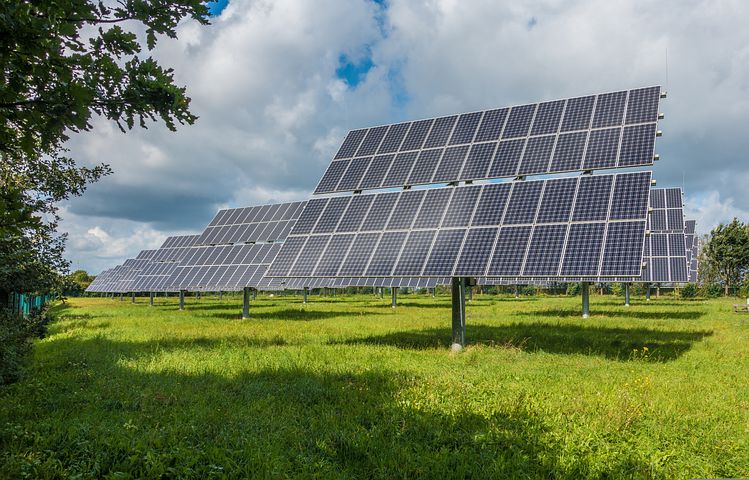There are several different types of solar panels. Monocrystalline solar cells are the most efficient and are commonly used for large energy systems. However, they may not be suitable for small installations. They are also not good for cold climates where snowfall may damage the solar cells.
High-performance N-type heterojunction
High-performance N-type heterojunction panels can provide more power per watt than traditional crystalline-silicon panels. They combine two technologies into a single cell, making them more efficient. P-doped amorphous silicon forms the p-region, and n-type crystalline silicon forms the absorber.
A major benefit of high-performance N-type heterojunction panels is their low power loss. This feature prevents PID and LID, which are common in conventional cells. Furthermore, they combine the advantages of two technologies: a crystalline N-type cell core that allows more direct sunlight conversion and an amorphous p-type layer that allows for greater resistance to high temperatures. This combination of features allows high-efficiency heterojunction solar modules to achieve optimal bifaciality of up to 95%.
The efficiency of a solar panel from https://www.symonsenergy.com.au/rec-solar-panels is an important criterion for choosing a panel. Panels with higher efficiency typically use higher-grade N-type silicon cells with a better temperature coefficient, which helps maintain power over time. High-efficiency panels will also offer a warranty on their performance – some manufacturers will guarantee 90% or higher power retention after 25 years of use.
Another important factor to consider when selecting the best solar panel is the resistance to LeTID and PID. In a PID-prone solar panel, you risk being a victim of the LID effect, which can result in rapid degradation of the panel. The LID effect is caused by atoms of oxygen in the silicon wafers.
The overall efficiency of a solar panel is measured under standardised test conditions. These conditions include a maximum ambient temperature of 25degC, a standard cell temperature of 25degC, and a specific Air Mass of 1.5. However, many other factors can affect the efficiency of a solar panel. Some of these factors include the number of cells, their interconnections, and even the colour of the backsheet. A black backsheet, for instance, absorbs more heat than a white one. Additionally, higher cell temperature increases the resistance and lowers the overall conversion efficiency.
Thin-film
There are several types of solar panels. Some are monocrystalline, while others are polycrystalline or multicrystalline. Both types use silicon crystals to convert solar energy into electric power. The energy from the sun frees electrons, which travel through a series of circuits to produce DC power. This type of power is used in appliances like air conditioners and lights. The main benefit of monocrystalline solar panels is that they are small and require little space. It makes them perfect for off-grid homes or urban areas where space is at a premium.
Monocrystalline and polycrystalline solar panels are more efficient than thin-film panels. Monocrystalline solar panels are better for homes, while polycrystalline solar panels are better for commercial buildings. Both types of solar panels have advantages and disadvantages. While polycrystalline and monocrystalline solar panels are more expensive, thin-film solar panels are cheaper and have a lower efficiency.
Despite being the most popular solar panel type, thin-film panels have some disadvantages. They are usually used on large roofs and commercial buildings but are becoming increasingly affordable for residential uses. Although they come with several drawbacks, the advantages far outweigh the drawbacks.
Withstand weather extremes
When choosing a thin-film solar panel, choose one designed to withstand weather extremes. This way, you’ll be able to use it for years. Thin-film panels are highly durable and can even be mounted close to the roof’s surface. They are also more flexible and lightweight than silicon-based panels. Thin-film solar panels are also available in various colours.
The efficiency of solar panels varies with climate. Monocrystalline panels are the most efficient, converting around 20% of sunlight into energy. Polycrystalline panels are in the middle of the spectrum but are not very efficient for residential purposes. Monocrystalline solar panels are suitable for most climates but not for cold climates, where snowfall and other weather conditions can damage the panels.
Monocrystalline solar panels are the most efficient type but are more expensive. These panels are more difficult to manufacture than thin-film solar panels. They also need a lot of space, so they are not a great option for small or medium-sized solar installations.
Thin-film solar panels are lightweight and have electricity-producing layers that are many hundreds of times thinner than the silicon cells we are familiar with. Currently, there are four primary types of thin-film solar panels: cadmium telluride (CdTe), polycrystalline (PC), and monocrystalline (PC). Thin-film solar panels are the most versatile and effective type of solar panel.
Although c-Si technology will probably keep the largest market share for the foreseeable future, thin-film solar technology is a good option for residential and small commercial installations. It could also expand to other applications in the future.

